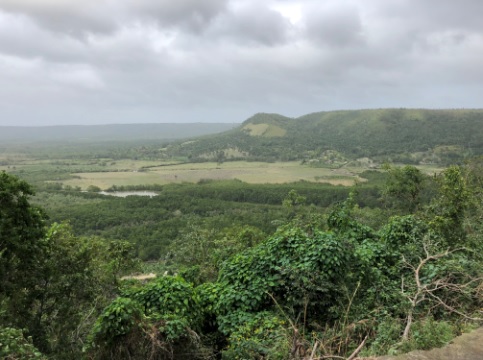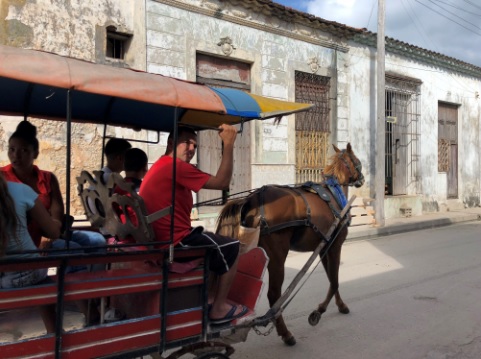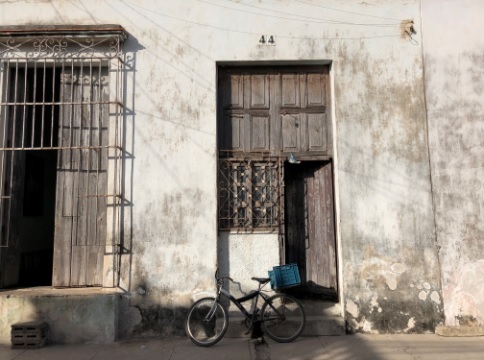Afro-Cuban culture, Blog, Cuba, Video and audio
Just as Afro-American music has strong roots in religious worship, Afro-Cuban music is firmly rooted in spiritual practice. The most popular and well known is Santería, also known as Regla de Ochá, La Regla de Ifá, or Lucumí
Pedro “Pedrito” Martinez, Roman Diaz and Little Johnny Rivero in a secular setting
The composition is “Tuesday Glory” and if you didn’t notice, it’s entirely percussion.
Left to right the instruments are conga (Little Johnny Rivero), timbale (Pedro “Pedrito” Martinez), and cajon and bata (Roman Diaz)
Recorded February 24, 2010 at Congahead.com studios.
Manteca!
From religious service to secular drum session to Latin jazz, that’s how the music flows – back and forth – and why it remains so vital to this day.
Onel Mulet ‘s arrangement of the Afro-Cuban classic “Manteca.”
Personnel:
Onel Mulet, soprano sax
Jason Marshall, baritone sax
Xavier Perez, tenor sax
Al Acosta, alto
Pedro “Pedrito” Martinez, bata (omele)
Roman Diaz, bata (iya)
Rafael Monteagudo, bata (oconcolo)
Little Johnny Rivero, conga
– Ken McCarthy
Jazz on the Tube
Afro-Cuban culture, Blog, Cuba, Cuban Jazz, Latin Jazz, The Cuba-US connection, Video and audio
In 1985, on his second trip to Havana, Dizzy Gillespie was accompanied by a documentary film crew.
The resulting film “A Night in Havana: Dizzy Gillespie in Cuba” captures Dizzy’s spirit like few other films.
The film includes beautifully shot concert footage of his performance at Havana’s Fifth International Jazz Festival, his adventures touring Havana and his reflections on Afro-Cuban and Afro-American culture.
As everyone knows, Dizzy liked to kid around.
He was also deep and not afraid to speak his mind as the film shows.
Featured musicians include: Nasyry Abdul Al-Khabyyr, drums; Sayyid Abdul Al-Kabir, reeds; Walter Davis, Jr., piano; John G. Lee, bass; Danny ‘Big Black’ Rey, congas; Gonzalo Rubalcaba; piano, and Arturo Sandoval, trumpet.
– Ken McCarthy
Jazz on the Tube
Afro-Cuban culture, Blog, Cuba, Travel to Cuba, Video and audio
The city of Matanzas has a population of about 140,000 people, about 7% of Havana.
It’s about an hour and a half east of Havana by car along a very well-maintained highway.
It’s one of the most important centers of Afro-Latin music and religion in the world, yet as the subtitle of Miguel Bretos’ excellent book on the city says, it’s “The Cuba Nobody Knows.”
More accurately, it’s the city casual tourists don’t know. Everyone who is knowledgeable about Afro-Cuban music and religion knows all about the city.
Jazz on the Tube took David Amram there (it was his first visit to Cuba outside of Havana) to visit Los Muñequitos de Matanzas.

David Amram jamming with Los Muñequitos de Matanzas in front of their headquarters.
A Los Muñequitos rumba to celebrate the birthday of the young daughter of one it its members.
There are three varieties of rumba: Yambú, Guaguancó and Columbia. You’re looking at Yambú.
Los Muñequitos de Matanzas in concert in Matanzas.
A friend makes us Frituras De Malanga
Alturas de Simpson. It’s a neighborhood in Matanzas, Simpson Heights, and also the title of an iconic danzón (1879) written by Miguel Faílde who was a pioneer of the genre.
 This is the view from Ermita de Monserrate. On one side of
This is the view from Ermita de Monserrate. On one side of
the ridge is the city and bay and on the other is this. Everyday transportation in many parts of Cuba including Matanzas: Self-replicating; runs on locally produced, non-toxic fuel; produces organic fertilizer; and environmentally sound
Everyday transportation in many parts of Cuba including Matanzas: Self-replicating; runs on locally produced, non-toxic fuel; produces organic fertilizer; and environmentally sound I judge countries on how well they take care of their children.
I judge countries on how well they take care of their children.
In that category – and many others – Cuba is #1 Matanzas: Those who know, know. Those who don’t, don’t.
Matanzas: Those who know, know. Those who don’t, don’t.
Great news!
You can now watch this video – and all Spanish-language videos – with English subtitles. It’s free!
Click here for instructions on how to turn on English subtitles.
– Ken McCarthy
Jazz on the Tube
Go to Cuba with Jazz on the Tube as your guide:
Click here for details
Afro-Cuban culture, Blog, Latin Jazz, Puerto Rico, Video and audio
Bad news: The performance series referred to in this interview has come and gone.
Good news: Brian Pace does a great job capturing what you missed and weaves the music together with illuminating conversation with the maestro.
If you don’t already know the music of Eddie Palmieri, now’s the time to get acquainted with him.
If you do know him, this interview will remind you how deep he is.
Enjoy!
– Ken McCarthy
Jazz on the Tube
P.S. Our unique programming is made possible by help from people like you. Learn how you can contribute to our efforts here: Support Jazz on the Tube
Thanks.
Afro-Cuban culture, Blog, Cuba, The Cuba-US connection, Travel to Cuba
David Amram, Pete Seeger and Dizzy Gillespie
Interview
Download the mp3 here
“Decían que yo no venía y aquí usted me ve” (They said I wasn’t coming and here you see me!)
– Benny More
In 1977, David Amram visited Cuba for his first and only time with Dizzy Gillepsie, Stan Getz, and Earl “Fatha” Hines.
Now 40+ years later, this lifelong student of the music is returning to Havana where he’ll be featured at the Havana jazz Fest.
Jazz on the Tube helped make this possible. Thanks to all the supporters who help make Jazz on the Tube possible.
– Ken McCarthy
Jazz on the Tube
Go to Cuba with Jazz on the Tube as your guide:
Click here for details
Afro-Cuban culture, Blog, Cuba, Cuban Jazz, The Cuba-US connection, Travel to Cuba, Video and audio
The album that resulted from Amram’s
last trip to Cuba over 40 years ago
Interview
Download the mp3 here
40 years later David Amram returns to Cuba….
In 1977, the Carter administration gave permission to a group of US jazz musicians to travel to Cuba the first such trip in the fifteen years after the Revolution there.
Dizzy Gillespie, Stan Getz, Earl “Fatha” Hines, Ray Mantilla, and David Amram landed in Havana for a 36-hour musical whirlwind.
Now, forty plus years later, Amram is making a long-awaited return trip, this time for a week to perform at the Havana Jazz Festival – an invitation facilitated by Jazz on the Tube.
– Ken McCarthy
Jazz on the Tube







